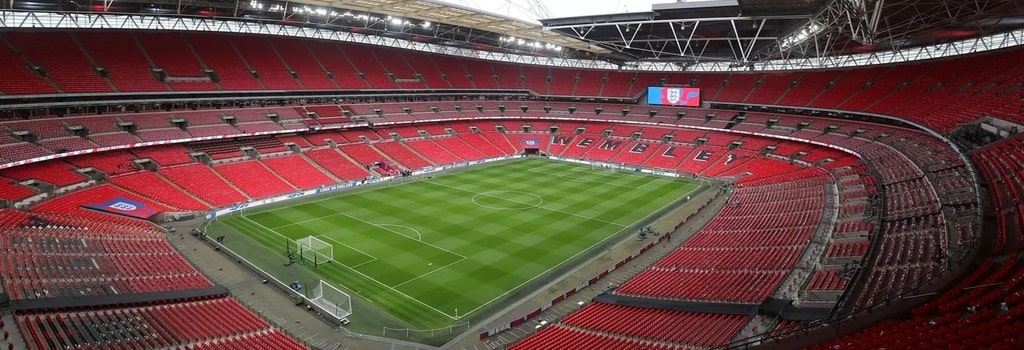

Football events bring together audiences worldwide and create significant economic opportunities for hosting cities. Majestic stadiums become symbols of pride, showcasing cutting-edge technology, improved accessibility, and sustainability features. These events boost tourism, promote local businesses, and drive infrastructure development, including the casino industry.
The construction and redesign of football stadiums often reflect more than just advancements in architecture or fan needs; they narrate the history and growth of nations. Consider Rome's Stadio Olimpico. Originally constructed for the 1960 Summer Olympics, this magnificent arena has witnessed some of Europe's most memorable football moments, including four European Cup finals. But beyond the goals and the matches, the Stadio Olimpico symbolizes Italy's post-war regeneration. Its architecture and the iconic torch, which flames alive during the games, are a testament to Italy's rich history and the enduring spirit of the Olympics.
On another continent, the FNB Stadium in Johannesburg tells a similar tale of national pride. Constructed in 1989 and later revamped for the 2010 FIFA World Cup, its design, inspired by traditional African pottery, symbolizes unity. As the primary venue for the World Cup's crucial matches, it stands as a reminder of South Africa's journey from apartheid's shadows into a global spotlight, illustrating how sport, and football, in particular, can mirror a nation's socio-political journey.
Football stadiums now feature cutting-edge technology, sustainability measures, and inclusivity. With stadium-wide Wi-Fi, mobile apps, and LED screens, fans can access real-time stats and replays. Eco-conscious designs like the Mercedes-Benz Stadium in Atlanta feature solar panels and stormwater retention. Inclusivity is also a priority, with specialized seating and aids for fans with disabilities.
As in ancient times, modern stadiums and football events have an important cultural significance and influence the development of the economy, and entertainment sector, including betting and gambling.
When a city hosts a major football event, it doesn't just attract fans to the stadiums. The nightlife and entertainment sectors also experience a significant boost. After enjoying a riveting match, tourists often look for other forms of entertainment. Casinos become popular, especially for international visitors seeking a taste of the local nightlife. Online casinos also benefit from this. Offering promotions such as a casino https://gryonline2.com/darmowa-kasa-bez-depozytu/25-euro-bez-depozytu/ deal can be particularly enticing for tourists who want to experience the thrill of betting without committing too much upfront.
Major football events often span several days or weeks. During this period, fans have downtime between matches, training sessions, and other football-related activities. This is when casinos step in, providing entertainment and the chance to win big. Not only do they contribute to the local economy through direct gambling revenues, but they also boost ancillary services like restaurants, shows, and hotel bookings.
Major football events are not just about competition and sport; they're monumental occasions that shape a city's, or even a country's, image on the global stage. Such events become the nexus where sport, culture, and commerce collide, amplifying the other's impact. These are the primary advantages of hosting events like these:
As the final whistle of these events blows, the benefits don't end. Their legacy can shape the host's socio-economic landscape for years.
Take, for instance, Wembley Stadium in England. After its renovation, it became the home ground for many significant football events. In 2017, it set a record for ticket sales for a Premier League match when over 80,000 tickets were sold for a single game between Tottenham Hotspur and Manchester United. Wembley, with its iconic arch and seating capacity of 90,000, is not just one of the most renowned stadiums in England but also globally. Its modern architecture and historical significance make it a prime destination for football enthusiasts.
Camp Nou in Barcelona, Spain, stands out as one of the most visited football stadiums worldwide. Every year it attracts millions of tourists, significantly boosting the hotel business in the region. According to the Barcelona Hotel Association, match days at Camp Nou see an average hotel occupancy rate of around 85-90%. Furthermore, with its seating capacity of 99,354, the stadium set a record in 2019 with over 1.5 million tour visitors, making it the third most-visited museum in Spain.
Constructing new stadiums leads to creating a myriad of job opportunities, from construction workers to food vendors. For instance, building the Maracana Stadium in Rio de Janeiro led to thousands of jobs. Some quirky roles stood out among these roles, such as the "balloon coordinator" responsible for the multitude of balloons released before each match's start.
Another fun profession that emerged was a "chant choreographer" who coordinated the fans' synchronized chants and waves during the games. Creating job opportunities cannot be understated, especially in regions with high unemployment rates. Preparing for massive events, such as the FIFA World Cup, require a substantial workforce, helping alleviate job scarcity, at least temporarily.
In the grand timeline of a city or a nation, hosting a major football event can be a defining chapter. These events, while transient, leave behind an enduring legacy that continues to shape and influence long after the crowds have dispersed. Long-term benefits post-football events:
These events are not mere entries in history; they become the cornerstone of growth, driving positive changes in various facets of society.
Tony Incenzo has been to over 2,000 football grounds - is he the world's barmiest football fan? Read about his love for Non-League football and groundhopping obsession, including watching a match in prison!
23 interesting things to do to pass the time until the football season restarts
An in-depth look at the biggest football attendances ever recorded, from the 1950 World Cup to pre-season friendlies in the States and the Scottish ground with dozens of 100,000+ attendances
Taking my son to his first football match was one of the best experiences I've had as a father so far. I've written this article for Alex to read when he gets older.
